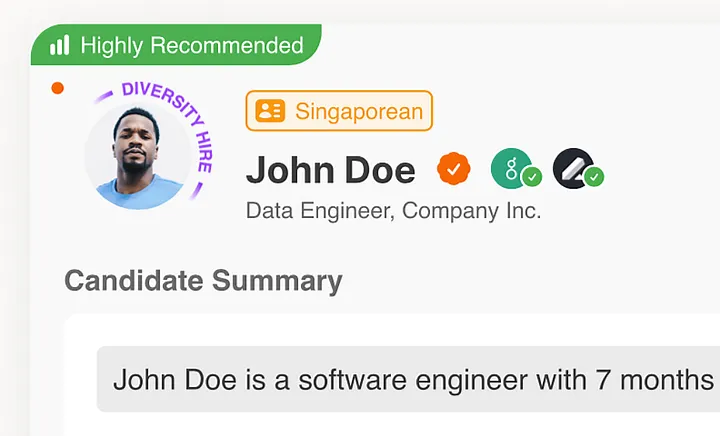Finding and hiring the best employees is crucial for any organisation. With the cost of a bad hire reaching figures as high as $240,000, talent acquisition and recruitment teams can’t afford to make mistakes in sourcing and recruiting candidates.
That said, companies can still engage and recruit quality candidates for their open positions if they follow sound strategies. Strong candidate sourcing strategies lead to a wider pool of talent to hire from, a more efficient hiring process, raises employee retention, as well as improves time to hire and time to fill.
In this article, we will be covering the best recruitment sourcing techniques that your team can start implementing today to help you find and hire new employees.
1. Holding Kickoff Meetings
Whether you are a recruiter or a hiring manager, it is important to keep lines of communication open and clear at all times to ensure that you are on the same page.

A kickoff meeting can help with this as it helps the recruiter and hiring manager define these roles clearly. In this meeting, the recruiter can gain a deeper understanding of the role. Some key areas to discuss include the role’s responsibilities, day-to-day work, the impact the eventual hire can have on the organisation, as well as the pull factors of the role and how it can be interesting and exciting to job seekers.
It also helps to review both good and bad examples of potential candidates to get a better idea of what the hiring manager is looking for.
Holding a kickoff meeting can reduce the likelihood of recruiters sending poor-fitting candidate profiles to the hiring manager, allowing the hiring process to become a lot more efficient.
Even after the kickoff meeting, it is important to check in at multiple stages of the pipeline to ensure that the team is on the right track when sourcing candidates. Keep each other in the loop if there are changing requirements to the job’s requirements or updates on the status of submitted candidate profiles.
2. Identifying and Creating Candidate Personas
After gaining a better understanding of the job’s requirements, it helps to identify and create candidate personas before beginning your recruitment sourcing.
This means mapping out how an ideal candidate may look like. From their job experience, industry background, skills, educational qualifications, previous companies they have worked at, to other factors such as their work preferences (hybrid, remote, in-office), demographics, and even their motivating factors.

After doing this, map out a sourcing method on how to best find these candidates. Where do they spend their time? How can you find and reach out to them? For instance, if you are hiring a software developer, it may be more effective to recruit through GitHub or StackOverflow. Depending on the country for which you are hiring, it may also be quicker to recruit on localised job boards, such as Naukri for hiring in India.
3. Making Use of Social Media
Besides posting roles on job boards, you can amplify talent sourcing by using social media platforms such as LinkedIn, Facebook, Instagram and TikTok. In fact, according to a survey by Jobvite, 73% of recruiters have successfully hired a candidate through social networks, making this a legitimate way to attract top talent.
Social media can be a handy tool to do targeted, narrow searches of passive candidates that allow recruiters to filter for candidates with certain educational qualifications, skillsets, and work experience, to name a few.
At the same time, recruiters can also actively post roles online, connect with potential candidates, and reach out to them through the platform’s messaging system. This can be an efficient way to find candidates’ resumes and initiate the first call.
To make candidate sourcing even more effective in the long term, make sure to strengthen employer branding on social media. Sharing your company’s culture and people humanises the brand and makes it more appealing to candidates.
4. Attending In-Person Events
Besides looking around online, attending in-person networking events could be where you find your next great candidate.

From job fairs, industry-wide conferences to seminars and networking events, recruiters stand a higher chance of finding new candidates with the required skills, abilities and qualifications. Offline candidate sourcing efforts also give employers the added advantage of face time with potential candidates, allowing them to add a personal touch to the often detached recruitment process.
The candidate experience is improved, and now there’s a higher chance of top talent responding to follow-up emails and messages after having a conversation with a recruiter in real life.
5. Implementing a Referral Programme
Employee referral programmes are initiatives designed to encourage existing employees to refer friends, family, and other people in their personal and professional networks to apply for open positions in their company, often in return for an incentive or reward.
Employee referrals are a good source of candidates and bring about a host of benefits to the organisation: reduced time to hire, better quality, wider talent pool, more reliable hires, and higher employee retention.
If you don’t have a referral programme in place or are looking to strengthen your existing one, there are many ways to go about this. Google’s approach is a surprisingly simple and straightforward one that reminds employees of open positions and actively prompts employees to make more referrals.
The tech giant would cut straight to the chase and ask employees targeted and specific questions such as “Who is the best product person you know in New York City,” according to Laszlo Bock, former Senior Vice President of People Operations at Google.
6. Looking at your Existing Database of Candidates
In addition to sourcing for new profiles, it can also be helpful to look at your existing database of candidate profiles and applicants from previous job postings. While these profiles may not have been the right fit for a role in the past, it is important to keep their information in your database and review them from time to time when new job openings surface
This is a much easier and cost-effective approach than starting from scratch.
In the long term, it helps to nurture this existing talent pool of previous applicants by keeping them updated on the latest happenings and job openings in the organisation.
By keeping the relationship warm, you’ll have qualified candidates that are more familiar with the organisation and more receptive to the recruiting team’s outreach efforts.
7. Sending Irresistible Outreach Messages
After finding ideal candidates, it is time to send off outreach messages. First contact is important because it will influence whether you get a response, which determines whether you can move the candidate to the next stages of the recruitment process.

Why spend all that time sourcing for candidates only for these efforts to go wasted when candidates don’t respond?
That is why it is crucial to craft engaging outreach messages that candidates cannot refuse opening and responding to, boosting your open and response rates and putting your sourcing efforts to good use.
8. Leveraging Automated Intelligence for Faster, Precise Candidate Matches
You may have heard of how ChatGPT can help with recruitment in various ways from creating interview questions to job descriptions, but did you know that artificial intelligence can also power effective sourcing?
Scout is effectively the ChatGPT of recruitment sourcing. As an AI-powered sourcing engine, all you need to do is provide a job description and Scout will generate a list of candidate profiles in under 60 seconds.

These profiles are ranked according to how qualified they are for your open role, so the best and most relevant matches are automatically sorted for your easy reference.

Double your fill rate and cut down on your sourcing time by 50% by taking advantage of AI in your recruitment process.
Try it today with a FREE 14-day trial, no credit card required. All you need is a job description and two minutes to get started.
Conclusion
Regardless of the one, or multiple, sourcing strategies best suited for your organisation, it is usually a good idea to start integrating automation and artificial intelligence into your recruitment process.
This is especially true of sourcing, which can be a tedious, time-consuming and unpredictable process. AI-powered tools like Scout can help teams cut through the noise to find the best candidates to fill your open positions.
